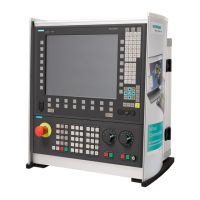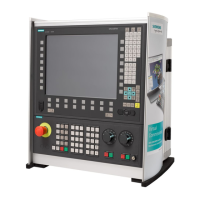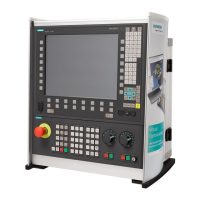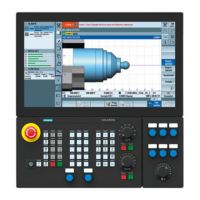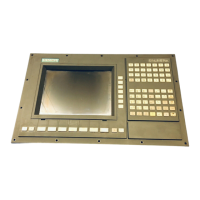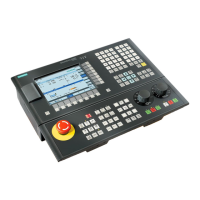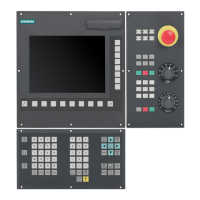01/2007
A-522
© Siemens AG 2007 All Rights Reserved
SINUMERIK 840Di sl Manual (HBIsl) – 01/2007 Edition
Hardware component connected to a –>”Control unit” via –>”DRIVE–CLiQ”, for
example. Drive components include: –> ”Motor Module”s, –> ”Line Module”s, –>
”Motor”s, – > ”Sensor Module”s and –> ”Terminal Module”s. The overall layout
of a Control Unit together with the connected drive components is called –>
”Drive unit”.
A drive line–up comprises a –>”Control unit” and the –>”Motor module”s and
–>”Line module”s connected via –>”DRIVE–CLiQ”.
A drive object is an autonomous, individual software function with its own
–>”Parameter”s. It may also have its own –>”Fault”s and –>”Alarm”s. The drive
objects may exist by default (e.g. On Board I/O) and may be easy to create (e.g.
–> Terminal Board 30, TB30). It may also be possible to create them more than
once (e.g. –> Servo Control). As a rule, each drive object has its own window
for parameterization and diagnostic purposes.
Parameters of a drive axis that include, for example, the parameters of the cor-
responding controllers, as well as the motor and encoder data. The parameters
of the higher–level technology functions (positioning, ramp–function generator),
however, are called –>Application Parameters. See –>Basic Unit System.
The drive system includes all the components in a product family (e.g. SINAM-
ICS). A drive system comprises, for example, –>”Line module”s, –>”Motor mod-
ule”s, –>”Encoder”s, –>”Motor”s, –>”Terminal module”s, and –>”Sensor mod-
ule”s, as well as additional components (reactors, filters, cables, etc.). See
–>”Drive unit”
The drive unit includes all the components connected via –>”DRIVE–CLiQ” that
are required for carrying out drive tasks: –>”Motor module” –>”Control unit”
–>”Line module”, and the required –>”Firmware” and –>”Motor”s, but not addi-
tional components (such as filters or reactors). Several –>”Drive”s can be imple-
mented in a drive unit. See –>”Drive system”
Records and makes positions available for electronic processing. Depending on
the mechanical construction, encoders can be integrated in the –>”Motor”
(–>”Motor encoder”) or mounted on the external mechanics (–>”External en-
coder”). Depending on the type of movement, a distinction is made between
rotary encoders (”rotary transducers”) and translatory encoders (e.g. –> Linear
Encoders). In terms of measured value provision, a distinction is made between
–>”Absolute encoder”s (code sensors) and –>”Incremental encoder”s. See –>
”Incremental encoder TTL/HTL” –> ”Incremental encoder sin/cos 1 Vpp” –>
”Resolver”
Position encoder that is not built in or mounted on the –> Motor, but via a me-
chanical transmission element or mechanical intermediate element. The exter-
nal encoder (see –>”Externally–mounted encoder”) is used for –>”Direct posi-
tion detection”.
Input component of a converter system for generating a DC link voltage to sup-
ply one or more –> ”Motor module”s, including all the required components (e.g.
–> ”Line module”s, fuses, reactors, line filters, and firmware, as well as propor-
tional computing power (if required) in a –> ”Control unit”.
Drive component
Drive group
Drive object
Drive parameters
Drive system
Drive unit
Encoders
External encoder
Infeed
Small SINAMICS Glossar

